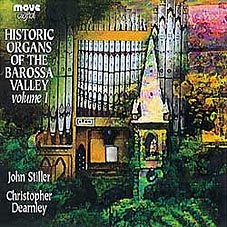Christ Church Anglican Church
Kapunda
Builder unknown; rebuilt J.J. Broad 1880; rebuilt Fincham & Hobday 1887
2 manuals, 13 speaking stops, 4 couplers, mechanical action
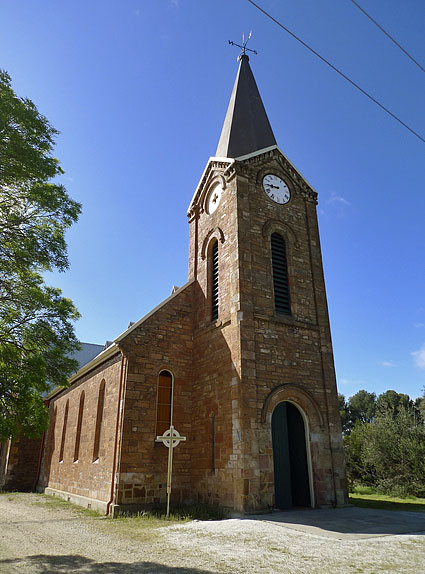
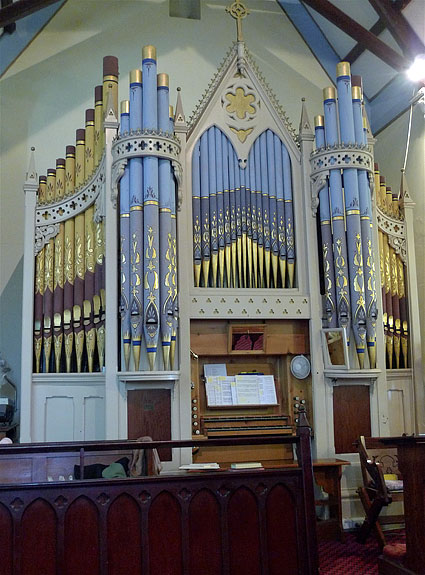
Recordings
Christopher Dearnley plays:
From Historic Organs of the Barossa Valley Volume 1 (1995) CD booklet and the 1991 OHTA Conference handbook:
Kapunda became a thriving town due to the discovery of copper in 1842. The population was more than 2,000 by 1851 and many interesting heritage buildings survive today. Christ Church was built in 1856 and reflects the opulance of the mines. The first organ was purchased from the estate of Wilhelm Mai (also spelt May) of Tanunda in 1873. The price was given as £120 although it was valued at £200 and the organ was said to have been built by Mai. It is unclear whether this organ was discarded or incorporated into the new organ of 1880 built by J J Broad who had worked briefly with other South Australian organbuilders. Five instruments can be credited to him, including that at Kapunda which failed in a very short time and was subsequently improved enlarged by Fincham & Hobday in 1886 for £270. A feature of this organ is the fine diapering of the pipes which may be the work of Broad's brother who was a noted artist in the colony. In March 1959 the organ was completely renovated.
From the 2009 OHTA Conference Book, David Shield writes:
| Manual 10 stops 1 Open Diapason 2 Bourdon 3 Stop Diapason treble 4 Stop Diapason bass 5 Principal treble 6 Principal bass 7 Hohl Flute and wood flute 8 Fifteenth treble 9 Fifteenth bass 10 Stopped |
8 8 8 8 4 4 4 2 2 16 |
Open wood TC Stopped wood TC to CC metal metal metal metal CCC to B 22 pipes |
| Manual Open Diapason Stopped Principal Flute Fifteenth Pedal Bourdon Posaune Manual to Pedal |
8 8 4 4 2 16 8 |
metal (includes front speaking pipes) wood metal wood wood (compass not given) |
Compass 56/-?
Casework gothic in style, elaborately gilded
H.J.W. (Carl) Mai 1873; rebuilt J.J. Broad 1880; rebuilt Fincham & Hobday 1886
2 manuals, 14 speaking stops, mechanical action
| Great Open Diapason Claribel Dulciana Principal Flute Fifteenth Swell Open Diapason Stop Diapason Gamba Gemshorn Piccolo one spare slide Pedal Bourdon Flute Couplers Swell to Great Swell to Great Sub Swell to Pedal Great to Pedal |
8 8 8 4 2-2/3 2 8 8 8 4 2 16 8 |
gvd bass (orig. 4') gvd bass |
Mechanical action
Compass: 56/30
3 composition pedals
Trigger swell pedal
Blowing handle
Attached drawknob console
Location: south transept
Water engine disconnected in situ
______________________________________________________________________
2 Observer, 24 October 1857, quoted in Smith, Revd L.P.G., A Short History of Christ Church Kapunda 1856-1976 (no pagination)
3 Ibid.
4 Register 30 November 1855. Blood was an instigator of the move for a church and became Treasurer of the committee. He was to be Mayor of Kapunda in 1865-66-67. During the incumbency of the Revd Thomas Sabine, 1858-1866, Dr Blood severed his membership with the church and joined the Congregationalists in protest at high church practices, though he did not resign from being a Trustee of Christ Church; Observer, 6 December 1856; Australian Dictionary of Biography online, article ‘Edmund Wright’
5 Register, 30 November 1855; Smith, Rev L.P.G., op cit
6 In August 1888, a charge of Bigamy was brought against Donaldson. Without giving detail, he was tried before an ecclesiastical court in Adelaide in the absence of the Bishop who was overseas. His offence was that he had married Catherine Brock in All Saints’ Church, St Kilda on 17 November 1866 and while she was still alive he married Jean Morton on 2 January 1888 in England. Consequently on the grounds of behaviour unbecoming of a minister the “respondent’s licence was cancelled”:. Kapunda Herald, 11 September 1888
7 Northern Guardian, 8 March 1873, p.2.7; Kapunda Herald, 11 March 1873, p. 2.6
8 Ibid., 22 April 1873, p. 3.3; repeated in Guardian,26 April 1873, p. 3.3
9 Kapunda Herald, 11 March 1873, p.2.6
10 Smith, op.cit.
11 Kapunda Herald, 7 July 1880, p. 2.6; Ibid., 13 July 1880, p. 2.6/7
12 Register, 2 March 1889, p. 2.1, 4.5 5.1
13 In error, Bridges, More than Musician (2006), p.7, attributes E.H. Davies with urging the addition of a second manual and hydraulic engine to the organ in 1888 and reviving the Philharmonic choir in Kapunda. However, it was Charles Davies who became the conductor of the Philharmonic (Kapunda Herald 25 April 1884) and it was the Gawler Congregational Church that upgraded its organ in 1888. Hobday to A. Davies, Fincham & Hobday letters, 12/164 2, May 1888
14 It seems that three options were suggested, the 3rd being accepted. This involved the “addition of open diapason swell and 3 composition pedals, double action to the great at £40 extra” Hobday to Donaldson, Fincham & Hobday letters, 12/119 15, September 1885. For early completion, see Hobday to Donaldson, ibid., 12/117 7, September 1885; ibid., 12/119 15 September 1885 short history. At the Easter vestry meeting it was announced that the new organ would probably be erected in July, Kapunda Herald, 4 May 1886, p. 2.6
15 Obituary, Register, 2 March1889, p. 5.1
16 Report on opening, Kapunda Herald, 31 December 1886, p.3.2/3; ibid,. 1 February 1887, p. 2.7. In March 1887, Hobday sent one of three photographs of Kapunda to Melbourne, Fincham & Hobday letters - Hobday to Fincham, 12/147 14, March 1887; Tenure of E.H. Davies: he only stayed at Kapunda till December 1888 before moving to St Peter’s Church, Glenelg as organist and choirmaster: Bridges, D., op cit., pp.5, 8
17 Fincham & Hobday letters, 12/132: order list
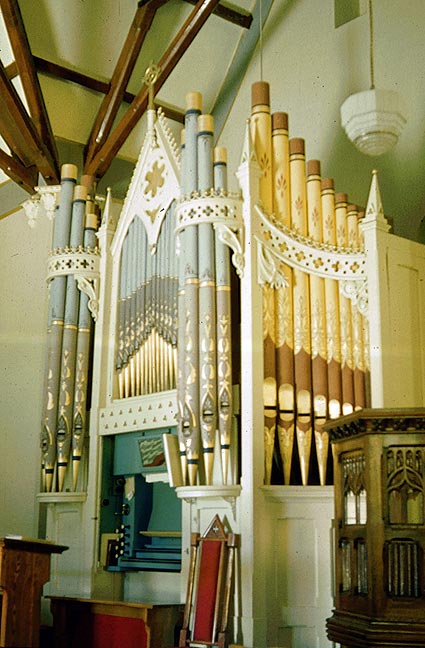 |
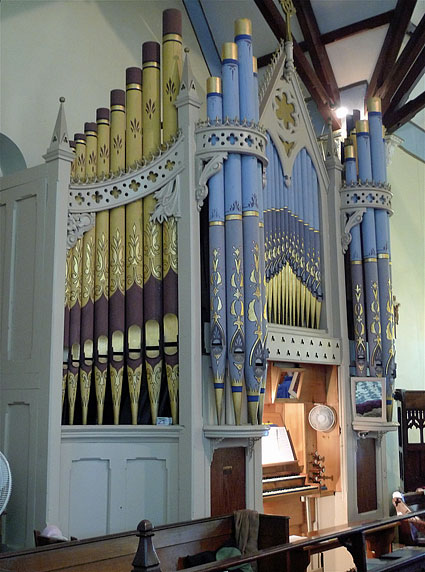 |
|
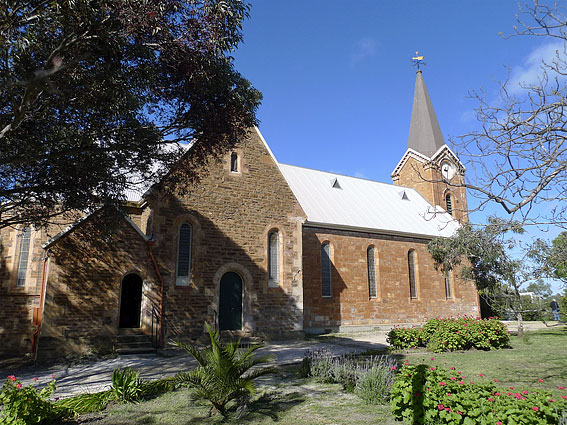
|
||
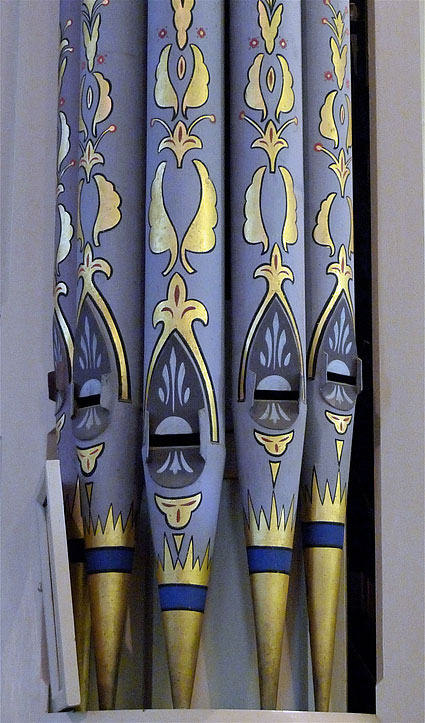 |
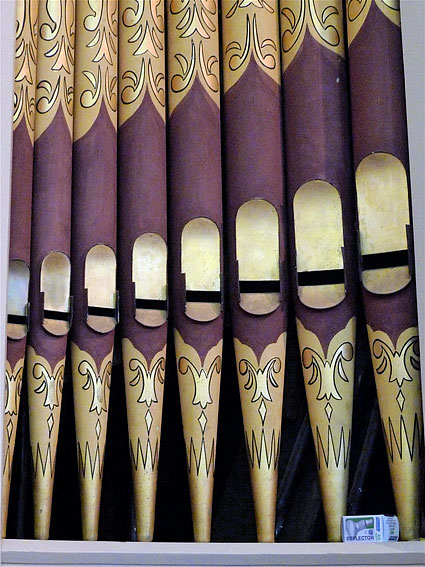 |
|
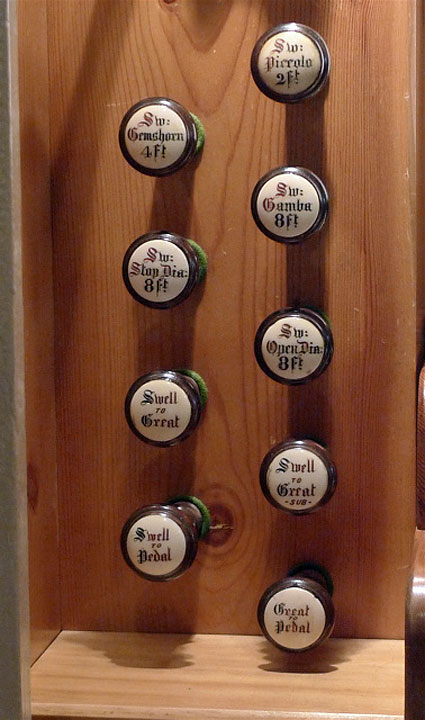 |
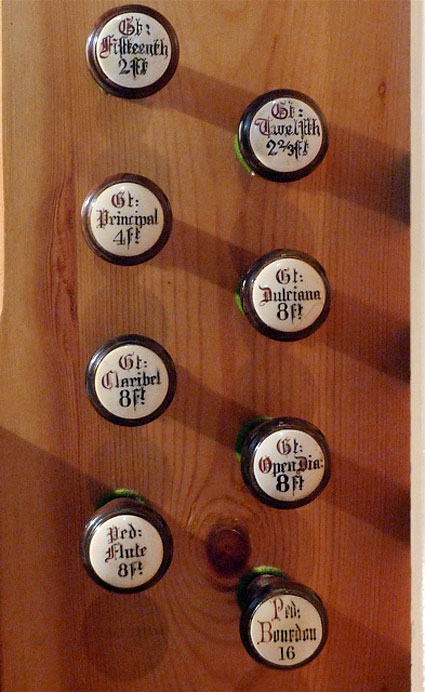 |
|
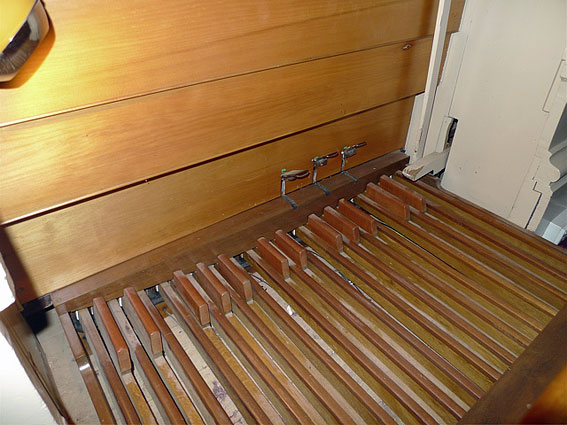
|
||
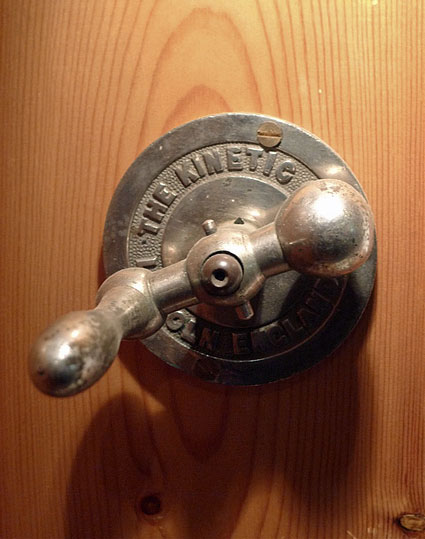 |
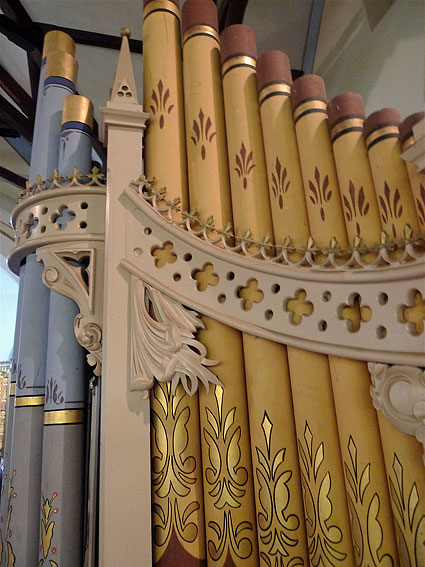 |
|
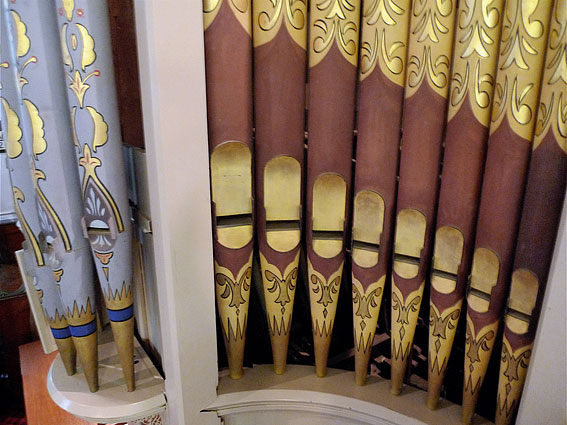
|
||
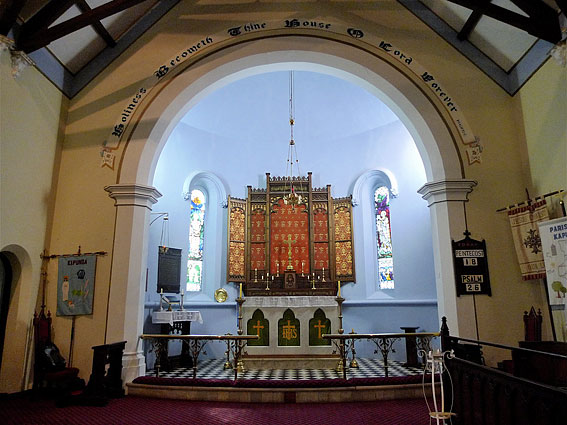
|
||
Photos: Trevor Bunning (Oct 2009)
